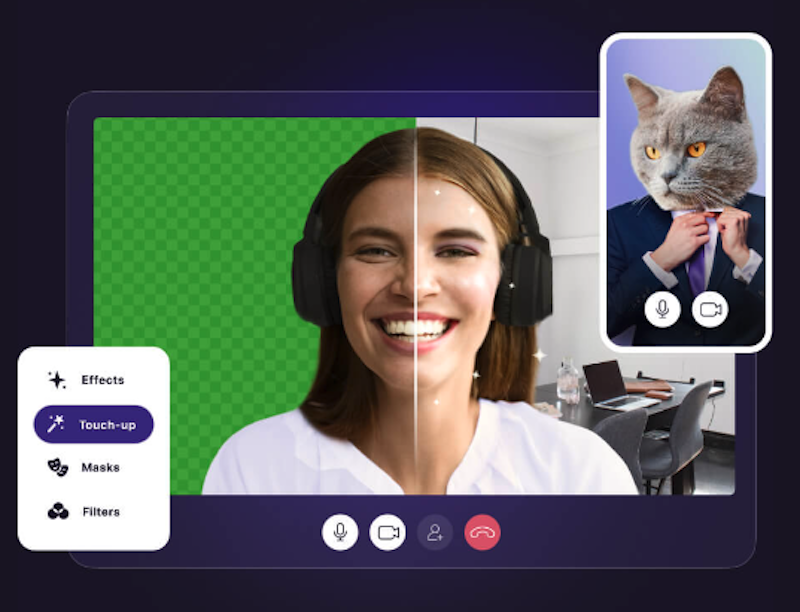
5 Ways to Build AR & AI Face Filters App
Augmented Reality (AR) and Artificial Intelligence (AI) are two futuristic technologies that have taken the world by storm. They are revolutionizing various industries, from gaming and beauty to education and healthcare.
But do you know what’s the coolest thing about them? Face filters apps.
These apps use computer vision and machine learning to apply fun and engaging filters to your face in real time, making you look like anything from a cute puppy to a superhero.
Now, you might be thinking, “Building an AR & AI face filters app is too complicated for me!” But don’t worry, there are many ways to accomplish this exciting feat. From face filters SDK to ML frameworks, there are numerous methods you can use to join the ranks of innovative tech developers.
1. AR Development Platforms
AR development platforms like Spark AR, Lens Studio, or Unity are powerful tools that provide a suite of resources to create wonderful AR experiences, including face filters.
Spark AR, created by Facebook, is perfect for those looking for a user-friendly platform with templates, tutorials, and a supportive community.
Lens Studio, from Snap Inc., offers 3D modeling and scripting tools for creating Snapchat lenses and filters that are sure to impress.
And if you’re looking for even more firepower, Unity has everything you need with its game development engine, graphics rendering, physics simulation, and AI capabilities.
Whether you’re a beginner or an experienced developer, these platforms make it easy to build your own AR & AI face filters app and take your creativity to new heights.
2. Machine Learning Frameworks
When it comes to making your face look even cooler, nothing beats the magic of AI-powered face filters apps built with machine learning frameworks like TensorFlow or PyTorch.
TensorFlow is like a magical potion that transforms your app into a face-tracking wizard. Developed by Google, it provides a treasure trove of tools and resources to create artificial neural networks that can recognize and track facial features in real time.
With TensorFlow, you can create models that are smarter than Einstein and more accurate than Hawkeye, allowing you to apply filters and effects that will blow your mind.
If you want to take your face filters app to the next level and be the talk of the town, you need a framework that is both flexible and efficient. That’s where PyTorch comes in.
Created by Facebook, PyTorch is an open-source machine learning library which is perfect for developers who want to create dynamic computational graphs. With it, you can build models that are super customizable and can be optimized for a range of hardware and software configurations.
So whether you’re building an app for iOS or Android, PyTorch gives you the power and flexibility you need to create awesome AI-powered face filters apps that people won’t be able to get enough of.
3. Face Filters SDKs
Building AR & AI face filters apps is not just about AR development platforms and machine learning frameworks. There are also some specialized face filters SDKs that are super powerful and engaging. One of these is Banuba Face AR SDK.
Basically, the game-changing software uses computer vision and machine learning algorithms to track facial features in real time. This means that developers can create all kinds of interactive and engaging face filters and effects, like masks, makeup, and even full-face transformations.
Plus, the SDK also supports multiple platforms, including iOS and Android, making it easy to create cross-platform AR experiences.
4. Hiring a Development Team
If you’re not comfortable building an AR & AI Face Filters App yourself, you can always hire a development team to do it for you. There are many experienced developers who specialize in building face filters apps and can help you bring your ideas to life.
When searching for a development team, it’s crucial to find one that has experience in AR development and machine learning.
You’ll want to look for professionals who have a portfolio of successful apps they’ve created and who have worked on similar projects in the past. Checking online reviews and ratings can also give you a good idea of their reputation in the industry.
It’s important to have a detailed discussion with the development team before hiring them. This will help ensure that they understand your vision and can create a development plan that meets your expectations.
Don’t forget to keep it real about your budget and timeline, and make sure the crew you bring on board can handle both like pros. In short, find a team that you trust and feel comfortable working with.
5. Outsourcing
Have you ever heard about outsourcing for building an AR & AI Face Filters App? It’s a surprising and exciting option for those who want to bring their app to life, without the stress of managing an in-house team.
One of the benefits of outsourcing is that it can be a cost-effective option, particularly if you don’t have the resources to hire a full-time development team.
Don’t forget to have a clear agreement in place to protect your intellectual property and ensure that the outsourcing team delivers top-quality work.
With outsourcing, you can enjoy the benefits of working with experienced professionals who specialize in AR development and machine learning.
This frees up your time to focus on other important aspects of your app while still ensuring its success. So, if you’re looking for an effective way to bring your AR & AI face filters app to life, outsourcing might just be the answer.


